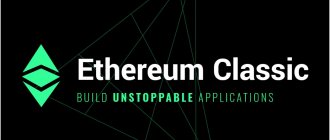Stratis is a powerful and flexible Blockchain development platform designed to meet the needs of real-world financial services companies and other organizations that want to develop, test and deploy blockchain applications.
The Stratis platform has been designed to meet the needs of businesses and organizations of all sizes and is particularly suitable for those running their services in a Windows/Microsoft environment.
STRAT is a cryptocurrency used by the Stratis platform to enable the creation of private and public chains for enterprise use. The Stratis platform offers a solution for quickly creating custom chains based on your own blockchain. These chains can be modified to suit a company's needs and even replicate features of popular blockchains such as Ethereum or Lisk, which can be tested individually or simultaneously.
Stratis is also a London-based consultancy that helps clients create chains and leverage existing blockchains that best suit their needs.
Stratis
Stratis is a blockchain development platform designed for businesses looking to leverage blockchain technology.
The platform allows users to create and deploy blockchain-based applications using a simple programming language that is familiar to many developers; C+ and Microsoft. Net Framework.
Stratis aims to make blockchain adoption easier and cheaper for companies by allowing companies to deploy their blockchain applications on the Stratis blockchain using the Stratis infrastructure.
Simply put, Stratis is a blockchain platform that offers turnkey solutions for blockchain adoption in the financial sector.
Thanks to the solutions that the project offers, companies can use blockchain using a minimum of time and finances.
Stratis also ensures privacy by providing private sidechains on its platform. Below are some of the unique features of the Stratis platform that enable it to offer effective solutions.
Stratis Full Node
This is the basis of the Stratis platform, which implements the STRAT and BTC protocols. Full nodes are capable of autonomously validating transactions and servicing blocks and transactions on other networks.
Full Node is an open source software built in C#, the features can be tailored based on the user's preferences.
Stratis side chains
Sidechains are a unique feature of the Stratis blockchain, supported by the Stratis full node. This technology is quite complex and is called Two-Way Federated Peg.
Here's a simple illustration of how this works: Think of the sidechain as the foreign country and the Stratis mainchain as the user's home country. The federation receives a certain amount of foreign currency (in this case APEX) which it can lend to sidechain visitors in exchange for staking STRAT.
When the user returns home, they can abandon their APEX and withdraw the equivalent amount to STRAT on the main chain.
Sidechains are also written in C#.
Stratis Academy
Stratis has an Academy that helps developers learn how to use the Stratis blockchain. This is necessary because blockchain technology is a new technology that is unfamiliar to many developers.
The Academy also helps users create robust Stratis blockchain applications in various economic sectors. This will go a long way in the adoption of blockchain technology in the market.
PoS - reward for storing STRAT on a wallet
Stratis can be stored in its native wallet to maintain network security. Those who store funds in their wallets receive a reward for this, according to a PoS (proof of stake) type consensus. It is possible to store STRAT using Raspberry PI, instead of doing it on a computer or laptop. For each block, one new token is issued, which takes about 60 seconds for the network to generate. This keeps STRAT's inflation rate extremely low while providing financial incentive to stakeholders.
Masternodes are an important aspect of the future of Stratis. These Breeze nodes are created to support the up-and-coming Breeze wallet, which gives users additional privacy for their transactions. In order to use such a Stratis Breeze node, users are required to lock a certain number of coins. In this case, it is necessary to keep 250,000 STRAT in the wallet at all times in order to use them to support the operation of the node. It's worth mentioning that Breeze nodes also support Bitcoin transactions, and the operator must have 5 BTC or more reserved to support this functionality.
It is obvious that this blockchain ecosystem has a lot to offer both developers and cryptocurrency fans. The ability to create applications in C# and .NET is quite attractive for companies. In addition, those who use cryptocurrencies can further benefit from the secrecy of transactions in both STRAT and Bitcoin.
How does Stratis solve the problem?
Stratis offers blockchain to companies to bridge the gap between the solutions offered by large public blockchains and the specific needs of private businesses.
Stratis uses various strategies to ensure that companies can take full advantage of their platform. For example, companies don't have to maintain the entire blockchain network and incur huge costs because they can access what they need directly.
This makes it possible for companies to try out working with blockchain technology itself using the example of Stratis, creating unique solutions for themselves. Let's look at the methods Stratis has developed to achieve this:
One-click deployment
This feature improves usability on the Stratis platform. With one click, the user can deploy the entire sidechain from the main Stratis blockchain and customize it to suit their needs.
Side chains
Once a sidechain is deployed, the user can make changes to private sidechains that do not affect other chains in the network. The deployed sidechain is easily customizable to suit business needs.
Additionally, the deployed chain retains all the security features present in the parent chain.
Fiat Integration Gateway
This feature, built into the Stratis blockchain, will allow national currencies to be integrated into the platform through a gateway.
This means that companies will be able to move currencies onto the blockchain by creating digital tokens that are equal in value to Fiat currencies.
ICO platform
Startis is developing an ICO platform that will allow block projects to launch their ICOs on the Stratis platform.
Three-tier architecture
The Stratis platform uses a three-tier architecture similar to Microsoft's.
This is another feature that will allow many programmers familiar with Microsoft software to easily adapt to Stratis.
High scalability and performance
With the growing demand for blockchain technology, blockchain software must be highly scalable to meet this demand.
Stratis has created an option for flexible blockchains that can be customized to the ideal chain sizes and block sizes to meet a company's transactional needs. This allows companies to create unique blockchains that are perfect for them.
Development team
The development team is open. The team consists of 9 people in total.
Chris Trew is the founder of the project. Chris is a consultant and technologist with over 10 years of experience in the IT field.
Extensive experience in the financial sector, with some of the leading financial institutions, as well as in the legal, aviation and local government sectors. Chris is also a backend developer specializing in C# and ASP.NET technologies.
He has been involved in blockchain technology since late 2013. Most recently, Chris worked as a volunteer developer in his spare time on the Blitz project. He also created the Fitalize platform, which allows people to earn money using hardware fitness trackers such as Fitbit.
Dan Gershony is a developer and co-founder of the project. Dan has over 10 years of experience in the IT field. It runs primarily on C# .NET with Microsoft certifications in WCF, Winforms and BizTalk.
Dan has contracted as a software integration engineer for companies such as Microsoft, Fujitsu and SolidSoft and was a developer at Blinkbox for 4 years working on the core platform and api.
In his words, “I discovered Bitcoin in early 2013 and have been obsessed with the technology ever since.”
Dan founded and built CoinVault multi crypto (Bitcoin and Altcoins) hybrid wallet focused on security and user control over their keys. Dan created Nako, an open source, cross-platform C# server application for indexing and exploring blockchain data and exposing api endpoints, and released dotblock, an open source C# library with blockchain protocol functionality.
Where to store?
You can store coins on an official cold wallet with a full “ Stratis Core ” node, for such operating systems as:
- Windows
- Linux
- Mac
You can buy this wallet from the official website.
Stratis Core wallet is a staking wallet that allows you to send and receive STRAT coins and stake to secure the network while receiving staking rewards.
You can also use the “Breeze Wallet” wallet - this is the same official wallet, only the Light version (without synchronization).
Breeze Wallet is a lightweight online wallet that allows you to send and receive STRAT and BTC. This means that you can pay for goods and services, as well as receive payments in any coin.
Breeze Wallet is available for the following operating systems:
- Windows
- Linux
- Mac
You can buy this wallet from the official website.
The developers also offer the same Breeze Wallet with an anonymous function.
You can buy this wallet from the official website.
You can also store coins directly on the exchange where they are traded.
Review of key events
- July 14, 2016 - announcement of the Stratis project on the Bitcointalk forum;
- July 26, 2016 - end of the ICO, 915 BTC collected;
- August 2016 - release of the first version of the platform;
- October 27, 2016 - Microsoft announces the inclusion of the project in the Azure BaaS program;
- April 6, 2022 - Stratis Academy was introduced: a Wiki-like system containing documentation and tips for working with the platform;
- June 7, 2022 - a historical maximum for the cryptocurrency rate: the Stratis token reached $10.85, according to coinmarketcap data;
- October 23, 2022 - the appearance of the beta version of Breeze Wallet;
- October 30, 2022 - the alpha version of the protocol supporting the use of masternodes was released.
How to mine?
It is impossible to mine the Stratis coin on video cards (GPUs) or ASICs, since the coin works on the Proof of stake protocol.
However, you can buy Stratis coins and move them to the Stratis Core cold wallet. After which you will be able to participate in staking and receive passive income from it.
How to mine Stratis on video cards?
If you have 1 video card suitable for mining, or a whole mining farm, then you can resort to the “pseudo mining” technique.
In this case, you should start mining any of the most profitable coins on your video card and sell it on the exchange in exchange for Stratis.
Technology, algorithm, features
Stratis aims to make it easier for developers to use blockchain technology. Programmers can use ready-made Stratis platform tools in their own applications.
Microsoft's C# is used as the base development language. According to the creators of Stratis, this choice has a commercial rationale: C# is popular in the corporate environment, which will be the first to feel the need to use blockchain for data storage.
Stratis uses the classic version of Proof of Stake as a consensus mechanism: the probability of a block being created by a specific user depends on the size of its balance. For this reason, there are no mining pools for Stratis: each computer acts as an independent node. A new block is generated every 60 seconds, so it only takes a few minutes for a transaction to be confirmed.
It is noteworthy that the reward for each block is 1 STRAT and does not change over time. It follows from this that the issue of coins in the system is not limited, and cryptocurrency is subject to natural inflation.
Unlike Ethereum, which stores all information on a single blockchain, Stratis offers the use of sidechains. Technically, a sidechain is a separate chain of blocks in which application-specific data is recorded. The main blockchain stores a small piece of information that confirms the authenticity of the side chains. The use of sidechains allows you to reduce the load on the network and reduce the size of the overall database, providing greater opportunities for scaling the system.
Where can I buy?
The coin is traded on the following exchanges
| # | Exchange | Pair |
| 1 | Bithumb | STRAT/KRW |
| 2 | Binance | STRAT/BTC |
| 3 | HitBTC | STRAT/BTC |
| 4 | Upbit | STRAT/KRW |
| 5 | Bittrex | STRAT/BTC |
| 6 | Binance | STRAT/ETH |
| 7 | Poloniex | STRAT/BTC |
| 8 | Upbit | STRAT/BTC |
| 9 | Livecoin | STRAT/BTC |
| 10 | LiteBit.eu | STRAT/EUR |
| 11 | Bittrex | STRAT/ETH |
| 12 | Upbit | STRAT/ETH |
| 13 | HitBTC | STRAT/USDT |
| 14 | SouthXchange | STRAT/BTC |
| 15 | HitBTC | STRAT/ETH |
| 16 | CREX24 | STRAT/BTC |
| 17 | SouthXchange | STRAT/USD |
| 18 | Bittylicious | STRAT/GBP |
| 19 | Bittylicious | STRAT/EUR |











